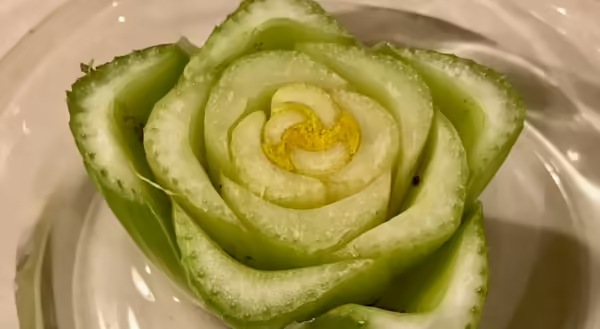
Whether you have a young person at home for school closures, or are just young at heart yourself, experimenting with kitchen scraps can turn into a bountiful garden to enjoy again. Skip the compost bucket or garbage can, and re-grow your leftover veggies and fruits for beautiful houseplants and garden additions.
Kitchen scrap gardening reinforces the concepts of recycling and reusing, and learning plant parts.
The following fruits and vegetables are examples of plants that can be grown again and again:
After enjoying a delicious ripe avocado, clean the seed and remove the seed coat (thin brown layer). Find the pointed top of the avocado seed, insert the tips of three toothpicks around the top third of the seed, spacing them equally. Rest the toothpicks on the edge of a glass, and fill with water until touching the bottom of the seed. Change the water every 2-3 days. Watch for roots and sprouts to appear—this may take up to a month. Once roots have filled the glass, and shoots are six to eight inches tall, plant it in a container of potting soil. During summer months, the new avocado plant can be set outside but should brought back inside if temperatures are below 45°F. A tree up to five feet may grow, but fruit may take several years to develop and will be much smaller than commercially available.
Sweet potato vines can be started in a similar manner to avocado. Cut the tuber in half and suspend it above the water. After a few weeks, transplant it to a container of soil and have the start of a luscious green trailing vine.
Orange, lemon, and lime plants can easily be started by seeds taken from the fruit. Seeds will sprout in moistened potting soil in two to four weeks. Glossy, fragrant leaves will grow rapidly, but fruit will not develop for several years.
Start with a ripe pineapple with healthy, green leaves. Cut ½ inch below the cluster of leaves and remove the rind and remaining fruit, leaving a tough core attached to the leaves. Pull off a few of the lower leaves to expose an inch of the stalk. Allow the top to dry for several days. Plant the top one inch deep in a mixture of peat, sand, and perlite. Place the container in bright, indirect light, and keep the soil moist, but not soggy. Roots should develop in six to eight weeks. Place plant outside during periods of frost-free weather. Fruit will develop in two to three years.
Leave about two inches of celery stalk intact. Place the base in a shallow bowl with one inch of water, and maintain the level at all times. Change the water every day. Roots and new leaf growth will appear in a few days. After two to three weeks, the celery base is ready to transfer to a planter of potting soil, covering it completely except for the center leaf tips. Other plants that be grown in a similar manner include lettuce, bok choy, cabbage, and greens of carrots, turnips, radishes, and beets.
The process of growing plants from leftovers can be fun and rewarding, but requires patience. The commercial production of vegetables and fruit consists of much more complicated processes, and what you grow at home may not match the aesthetics of what we can buy at the store. But hopefully these green thumb experiments will leave you wanting to try new things in your garden. Reduce, reuse, recycle… and regrow!